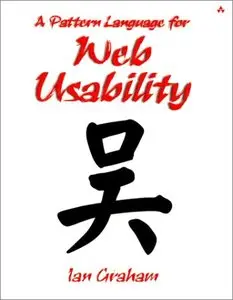A Pattern Language for Web Usability By Ian Graham
2003 | 304 Pages | ISBN: 0201788888 | PDF | 4 MB
2003 | 304 Pages | ISBN: 0201788888 | PDF | 4 MB
Despite the astronomical number of hours invested in developing websites for commercial and other uses, it is now clear that many websites are poorly designed and have floundered as a result. There are four main aspects of website design that can affect a site's success: usability, content, navigation and aesthetics. The last three aspects all contribute in some way to the first. One possible solution to the problem of ineffective website design is to develop and follow a set of guidelines for designing usable websites. One of the most important recent ideas in software development is that of design patterns. Design patterns are standard solutions to recurring problems, defined to help people discuss them easily and to share solutions to common design problems. This book introduces and details a pattern language that will help you to address all four aspects crucial to website design success. As well as defining the 79 patterns that make up his pattern language, Ian Graham provides a handy reference to existing best practice, organized in a way that reflects the structure of a typical web design project. The book is lavishly illustrated with examples of good and bad websites to help you grasp clearly the essentials of successful website design. The full color pattern language is ready for you to apply to your own design projects. A Pattern Language for Web Usability is a practical guide for web designers and managers of website development projects and can be used as a simple checklist to aid the design process and ensure that websites are usable and successful. WU in basic terms = Web Usability. This pattern language originated at an Object Technology conference in Oxford, England. Wu is also a natural language, or rather a group of dialects spoken in Eastern China, and also a common family name. We have used the simplified Chinese character for Wu as a graphical motif throughout this text.



